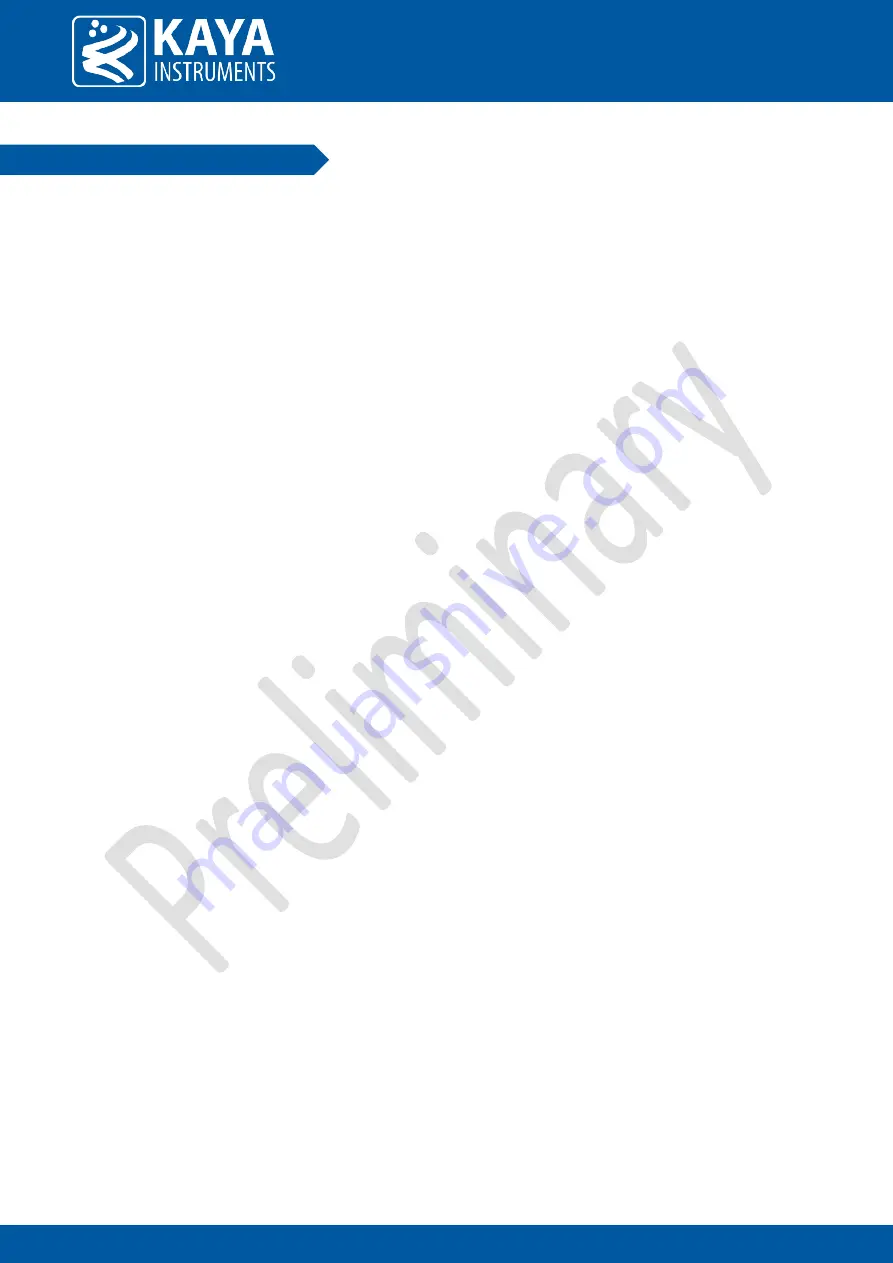
2 0 H a M e s i l a S t . , N e s h e r 3 6 8 8 5 2 0 , I s r a e l
P O B 2 5 0 0 4 , H a i f a 3 1 2 5 0 0 1 , I s r a e l
T e l : ( + 9 7 2 ) - 7 2 - 2 7 2 3 5 0 0 F a x : ( + 9 7 2 ) - 7 2 - 2 7 2 3 5 1 1
Page no. 14 | Appendix No. 1
8
Camera Operation
8.1
SDIControlPoint
KAYA Instruments provides a free, open-source camera control software (named: SDIControlPoint). A
downloadable file as well as the software’s user manual (KAYA SDIControlPoint Manual.pdf) are available at the
following address for your convenience:
cloud.kayainstruments.com/s/SDI
8.2
Terminal Usage
8.2.1
Terminal
The Iron SDI can be controlled via a simple terminal connection. All commands consist of ASCI characters.
8.2.2
Terminal Settings
The terminal interfaces are either RS232 or RS485 and are connected via the GPIO connector. The default interface
settings are:
115200 baud
8 bit data
no parity
1 stop bit
no flow control
The camera accepts commands in text form and responds in text messages. Every command is confirmed by either
an "OK" or a "FAIL" to indicate whether it had been successfully implemented or not, respectably; errors have to
be handled by the user or a host software which is used to control the device. Depending on the prompt setting
one may receive a "=>" prompt after start up. Commands can then be sent to control the device or receive
information.
8.2.3
General Command Format
If the prompt command is enabled the firmware will send its prompt ("=> ") when awaiting commands. Every
command line is accepted as a single text line, terminated by either CR or LF. The command consists of a command
string, possibly followed by one or more parameters separated by a single space. Depending of the command the
parameters can come in one of these formats:
Signed decimal : -323, 422
Hexadecimal: 0x35ff34aa
String : any_string
The command will be executed and may produce some text output in a single line or more, followed by a single
status line consisting of either "OK" or "FAIL". In case of failure an error code may be added in the same line, e.g.
"FAIL 3".The lines sent by the firmware are terminated with both CR and LF. Most commands do have parameters.
The parameters depend on the given command.





























